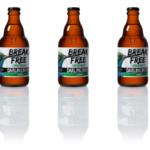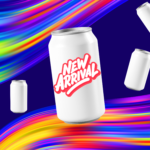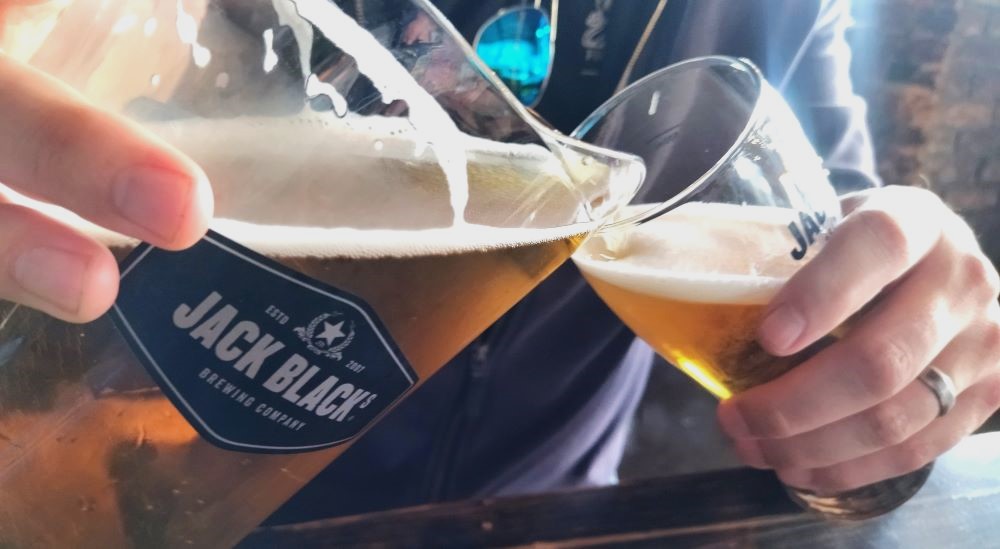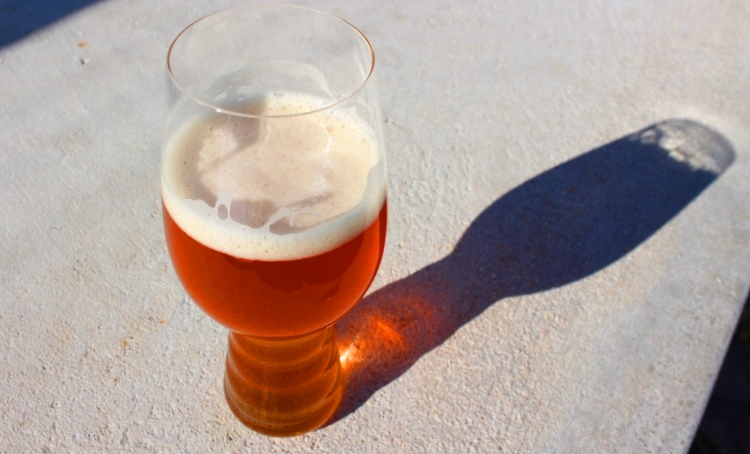
Jo’burgers have awesome taste in books
Ever since the first Jozi Craft Beer Fest in May 2012, people have raved about the event. Until now I’ve never had the chance to attend one of the festival’s incarnations, but as the fourth edition rolled around, I was finally going to be in Johannesburg at the right time. So was the festival as well-run, enjoyable and all-round awesome as beer-lovers, bloggers and hipsters alike have all been saying?
It really was.
I actually wasn’t in the mood for a fest when I arrived at Marks Park. Two consecutiveGrape vs Grain defeats at The Wine Show, plus a particularly nasty hangover (all wine’s fault of course) had turned me into a bit of a beerfest Grinch, and the sight of the queue waiting to get into the event just added to my generally grumpy demeanour. But the line moved quickly, those manning the door were efficient and the instant I set foot inside I was instantly in festival mode.
Chilled vibes and mechanical bulls
 There was just something about the vibe at Jozi Craft that I loved. It was busy – yet again a sell-out show before the gates had even opened – but there’s just so much space that it somehow had the feeling of a 1960s outdoor music fest. OK, so I have clearly never attended a 1960s outdoor music fest, but I kind of imagine they’d be pretty chilled, with people sitting on the grass, chatting and just generally being nice. This, anyway, was what happened at Jozi Craft.
There was just something about the vibe at Jozi Craft that I loved. It was busy – yet again a sell-out show before the gates had even opened – but there’s just so much space that it somehow had the feeling of a 1960s outdoor music fest. OK, so I have clearly never attended a 1960s outdoor music fest, but I kind of imagine they’d be pretty chilled, with people sitting on the grass, chatting and just generally being nice. This, anyway, was what happened at Jozi Craft.
That’s not to say there wasn’t plenty going on. There were the ubiquitous beer pong tables, there were giant games of noughts and crosses to play, a sizeable stage with live music and there was even a mechanical bull – a new addition to the usual SA beerfest attractions. I bypassed all of the above, for I am one of the seemingly few people who attend beer festivals purely for the beer.
Easy-drinking with a sprinkling of hops
 So enough waffle – let’s get to the beer. There were 26 breweries in attendance (I didn’t count the beers) and there were blissfully few off-flavours to be found among them. I’d have to say that the adjectives of the day included ‘light’, ‘easy-drinking’ and ‘undemanding’, with lots of the beers available being lower ABV or lighter-tasting versions of their respective style. But while there perhaps weren’t too many ‘wow’ brews, virtually everything was definitely drinkable.
So enough waffle – let’s get to the beer. There were 26 breweries in attendance (I didn’t count the beers) and there were blissfully few off-flavours to be found among them. I’d have to say that the adjectives of the day included ‘light’, ‘easy-drinking’ and ‘undemanding’, with lots of the beers available being lower ABV or lighter-tasting versions of their respective style. But while there perhaps weren’t too many ‘wow’ brews, virtually everything was definitely drinkable.
Stand-outs for me included the Three Hop IPA from Standeaven – innovative as well as tasty in that it uses only South African hops to get the granadilla et al aromas you normally associate with US varieties. Also tentatively venturing into the hop arena was newbie brewery Backwards Bean with their APA, displaying a nice balance of toffee maltiness and grassy, slightly tropically fruity hops.
The usual quaffers were there – I’m a fan of Loxton Lager’s balanced bucchuness,Brauhaus am Damm’s weiss is always a winner, De Garve’s Raspberry Delight is ideal as a daytime thirst quencher (a breakfast beer, according to brewer Patrick), while Dog & Fig’saward-winning stout was a hit once the sun went down (my god Jo’burg is cold 10 seconds after sunset). For me a fest is about trying something new, so I steered clear of the Cape breweries whose beers I drink all the time, though I was happy to see them there. I might be able to get CBC’s amber weiss or a pint of DP Blockhouse at the end of my street, but not everyone is lucky enough to live next to Banana Jam and like me, many festival-goers are also looking for a beer that they can’t find at their local.

How to tackle bad beer
As for the off beers, I’m still not sure how that should be dealt with. Can organisers really vet and potentially remove a beer from the show once brewers have hauled their stands, kegs and staff to an event? Should it even be the organiser’s responsibility to make sure off-flavours are kept at bay? Or should the onus be on the brewers who surely shouldn’t want to damage their brand by putting out Band-Aid ales or swill that tastes like snakebite.
It seemed to be that organiser Jason Cederwall has managed to strike the balance between keeping both the brewers and the drinkers happy. He could have easily squeezed in several hundred more attendees, which would have bumped up profits for organisers and brewers alike. He could have slotted in plenty more brewers, which would mean more beers to taste and shorter queues for drinkers. But capping numbers on both sides meant that no-one waited more than five or six minutes for a beer while brewers went home with a pocketful of cash, with some even selling out of ale by the middle of the afternoon.
Eating, peeing, dancing, chatting
Food-wise, queues were at times huge but the selection was pretty good and despite some complaints about prices, I thought the average cost of R50 was rather reasonable.
 To misquote Frank Sinatra, complaints, I had a few, but then again, too few to mention. If I were to nit-pick to the extreme, I’d say that I wanted some soap in the toilets (yes, I know I go on about it, but I tend to shake a lot of hands at beerfests and I don’t like knowing that most of those hands possibly have a bit of pee on them) and perhaps a few more food vendors. Some suggested more seating, but I quite liked the ‘beer picnic’ on the grass vibe.
To misquote Frank Sinatra, complaints, I had a few, but then again, too few to mention. If I were to nit-pick to the extreme, I’d say that I wanted some soap in the toilets (yes, I know I go on about it, but I tend to shake a lot of hands at beerfests and I don’t like knowing that most of those hands possibly have a bit of pee on them) and perhaps a few more food vendors. Some suggested more seating, but I quite liked the ‘beer picnic’ on the grass vibe.
The music was loud enough to dance to when in front of the stage, but not so loud that you couldn’t hear the brewers’ descriptions of their beers, the rowdy beer games were kept away from the food and beer stands and the toilets (which were plentiful) kept even further away. The fest was fun and easy to navigate and I have to say, this one is going to take some beating.
This post first appeared on The Craft Beer Project.










0 Comments